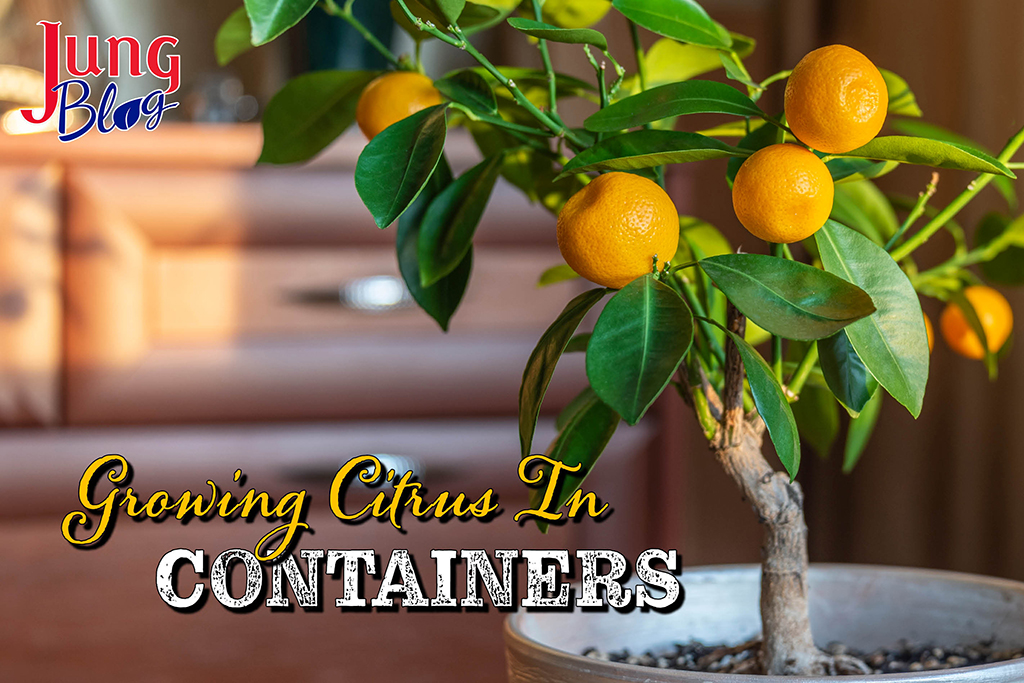
Have you ever visited a place where citrus trees grow? The sight of those beautiful trees may leave you wishing you could grow your own citrus. Luckily, citrus can be grown in containers, even in northern climates. Citrus trees offer many benefits to gardeners. Grafting has created compact varieties of citrus that bear fruit at an early age and are suitable for growing in containers. In addition to edible fruit, the trees produce fragrant flowers, which often bloom during winter. You also gain the satisfaction of growing citrus fruit in your home. Before growing citrus, it’s essential to know what conditions are needed for the trees to thrive.
Types of Citrus
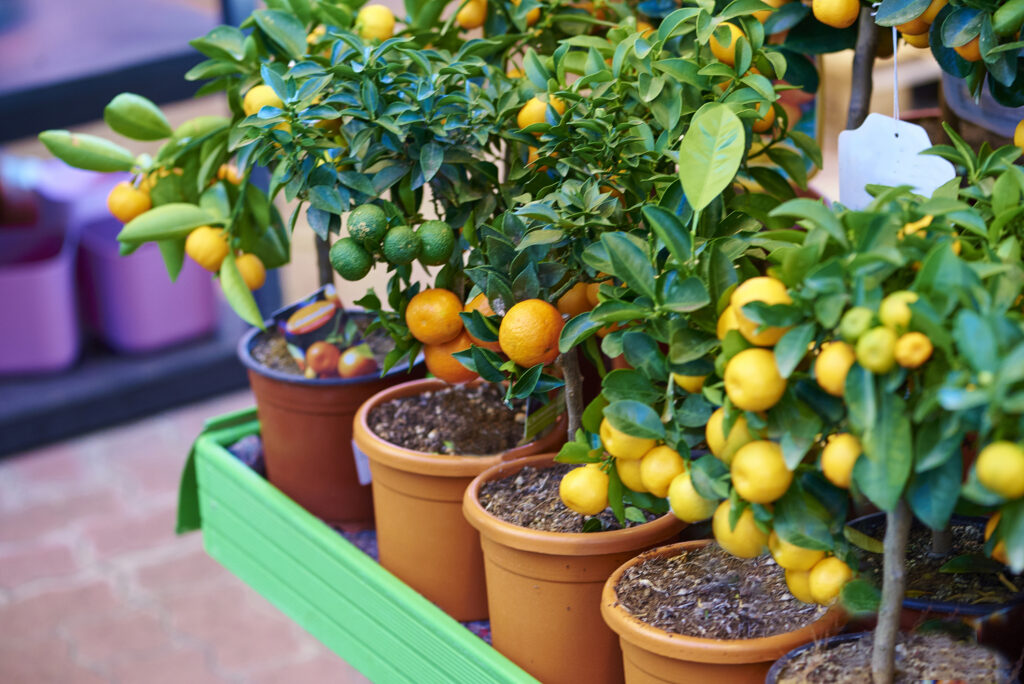
My first citrus tree was a Meyer Lemon, which I’ve been growing for almost a decade. Meyer lemons are a hybrid between mandarins and lemons. The fruit has a hint of sweetness but maintains a lemony flavor. The Meyer Lemon is the most popular citrus grown in containers for several reasons. It’s a dwarf variety that maintains a compact shape, making it easy to grow in a house during winter. The tree produces fragrant flowers and fruit several times a year, especially in winter. Meyer Lemons are self-pollinating, allowing the tree to produce fruit indoors without pollinators.
Calamondin is another good citrus for growing in containers. This species is a natural hybrid between mandarins and kumquats. Though primarily grown for their ornamental qualities, the orange fruit is edible and useful for adding flavor to drinks and other foods. Like the Meyer lemon, Calamondins can produce flowers and fruit several times during the year.
Other types of citrus can be grown in containers as well. A few examples are limes, mandarins, and oranges. Every kind of citrus has different characteristics. Before purchasing a citrus tree, you should research the specific type of tree you’re buying to give it the proper care.
Planting Citrus Trees
You can grow citrus in various containers, from plastic to clay. But remember to choose a pot that is easy to move in fall and spring. The size of the tree determines the size of the container, but most trees will require a container that is a minimum of 12″ in diameter. The pot’s diameter should only be a few inches wider than the rootball.
Light
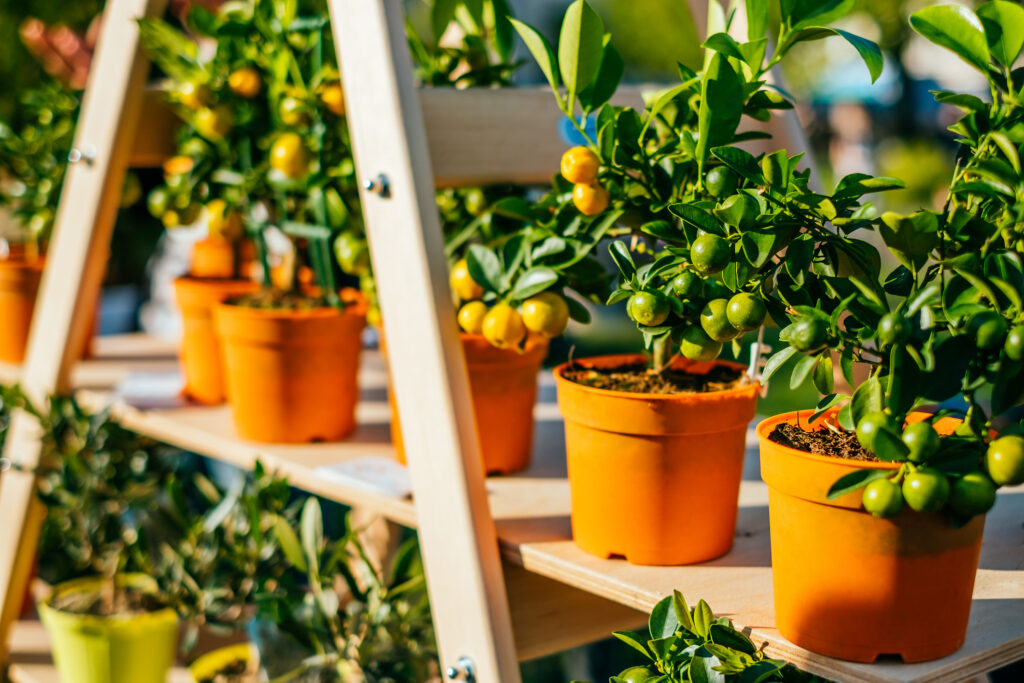
Perhaps the biggest challenge to growing citrus in northern climates is giving them adequate sunlight. Citrus trees require full sun during the summer, which means putting them outside in late spring, once the danger of frost is over. Container-grown citrus doesn’t need much space, making them suitable for balconies and small patios. Citrus trees usually create new growth during the summer months. As fall approaches, you should acclimate trees to indoor conditions before you bring them inside for winter. You can acclimate them over two weeks by gradually decreasing the amount of sunlight they receive. This process reduces stress on the trees as it comes inside for winter. If you take a citrus tree from full sun to indoors without acclamation, the tree will lose many of its leaves because it’s stressed from losing sunlight. The acclamation process should be repeated in late spring when you move the tree outside for summer. During winter, you should place citrus in a southern facing window, giving it maximum sunlight. If you don’t have a southern-facing window, you can use grow lights to increase light around the plants. The grow lights should be placed 1-2 ft above the plants to give them adequate light and prevent the leaves from burning. A few examples of suitable grow lights include T5 fluorescent bulbs or LED bulbs.
Temperature
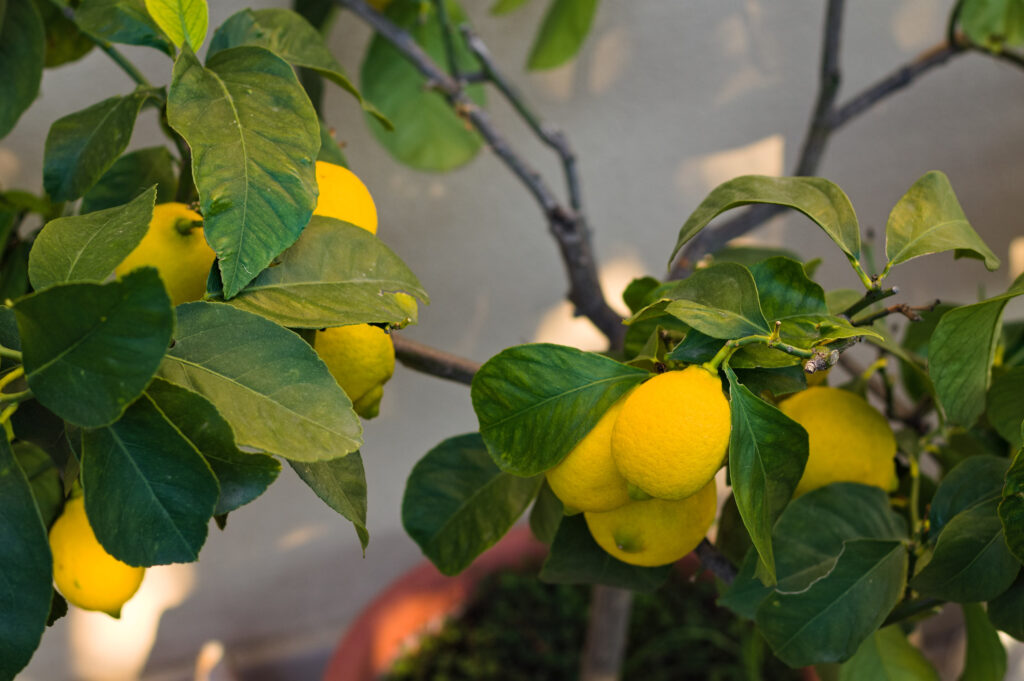
Most citrus is native to tropical and subtropical parts of the world, where temperatures below freezing are less common. When you grow citrus in containers, a good rule is to bring them inside anytime the low temperature drops below 40°F. This rule is significant in spring and fall when overnight temperatures fluctuate each night. When you place trees inside, avoid putting them near heat vents or cold drafts.
Moisture
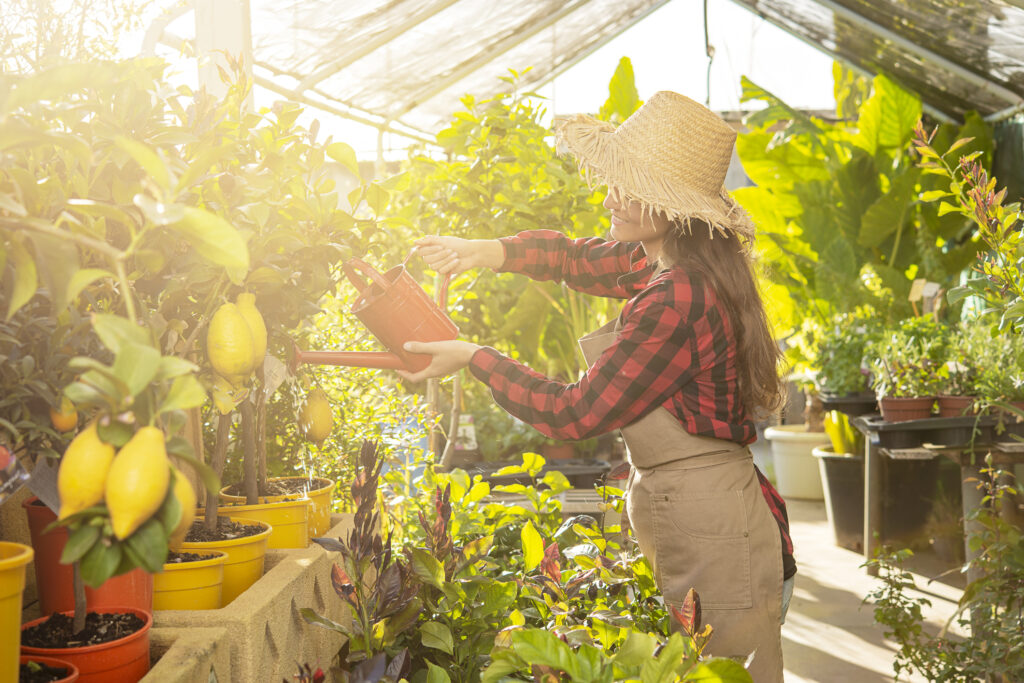
Citrus trees require consistent moisture to grow and produce fruit. Keeping the soil excessively wet or dry will cause the leaves to drop. When you’re watering, be sure to check the moisture levels in the soil. Stick a dowel or your finger 3 inches into the soil to check the moisture. If the soil feels moist, you should wait a couple of days before watering. If the soil feels dry, it’s time to water. Be sure to water the tree thoroughly, allowing water to drain out the bottom. You should always grow citrus in pots with drainage holes to allow good drainage.
Soil and Fertilizer
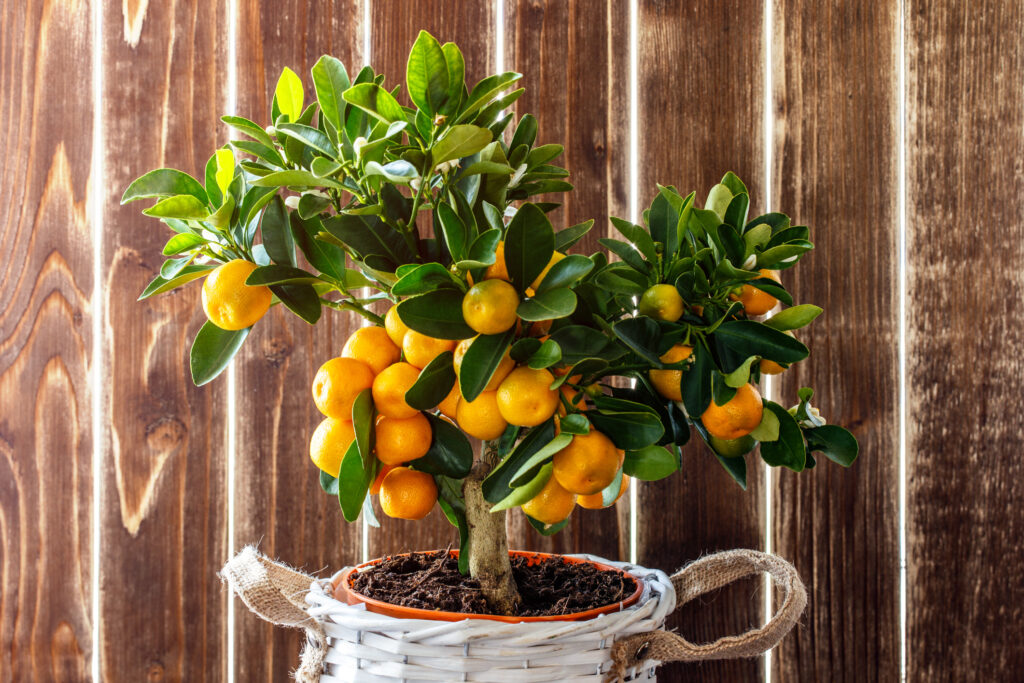
Choosing the proper soil is crucial for growing any plant. Always use potting mix for plants grown in containers, not garden soil. Using soil from the yard in containers leads to drainage problems. Potting mix is made with ingredients that allow good drainage while holding enough water for the plant. Many potting mixes contain fertilizer that feeds the tree after planting, but those nutrients need replenishing. During the growing season, you should fertilize your citrus once a month with a nitrogen-rich fertilizer, such as 10-5-5. Once you bring the tree inside for winter, hold off on fertilizing until spring.
Pests
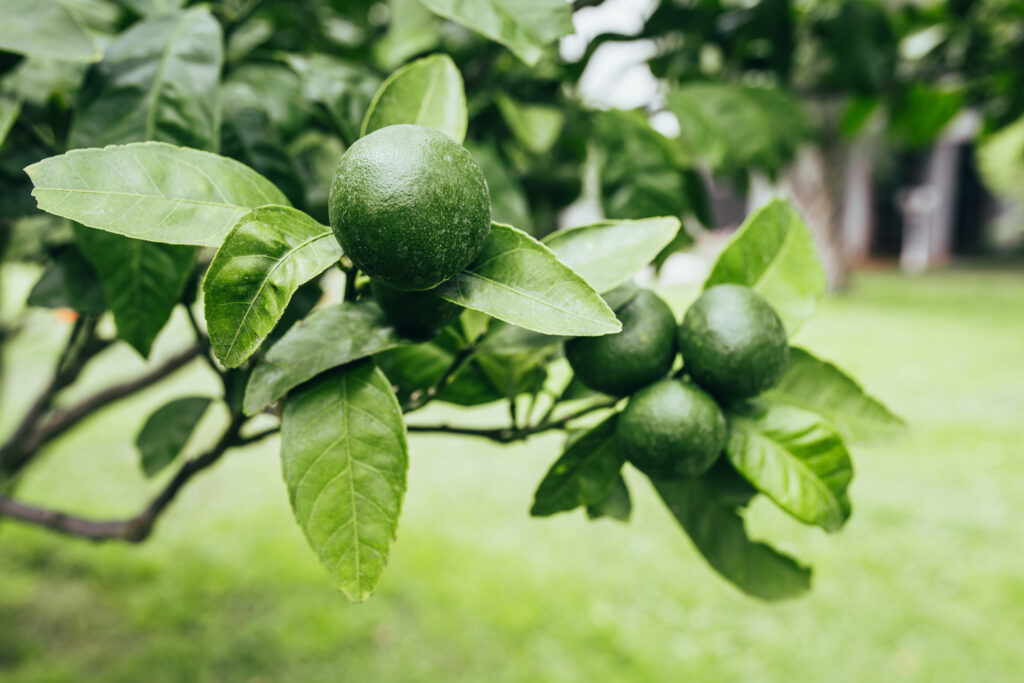
As you grow citrus, you will likely encounter insect pests. Always inspect a tree before buying to prevent unwanted insects from coming home with you. Common pests on citrus include scale, spider mites, and whiteflies. Scouting your trees for pests is also crucial during winter when scale and spider mites are prevalent. Before you bring the trees inside for winter, check the tree for pests, especially the undersides of the leaves and stems. A commonly used preventative spray is neem oil, which helps prevent insect problems. A good practice is to spray with neem oil every week or two during early fall before bringing the tree inside. If you have an infestation, apply rubbing alcohol to the infected areas of the tree using a cotton swab. If the infected areas are isolated, you can prune off the infected leaves or branches.
Growing citrus in containers can be challenging, but the experience rewards you with beautiful flowers and homegrown fruit.
Other Recommended Reading
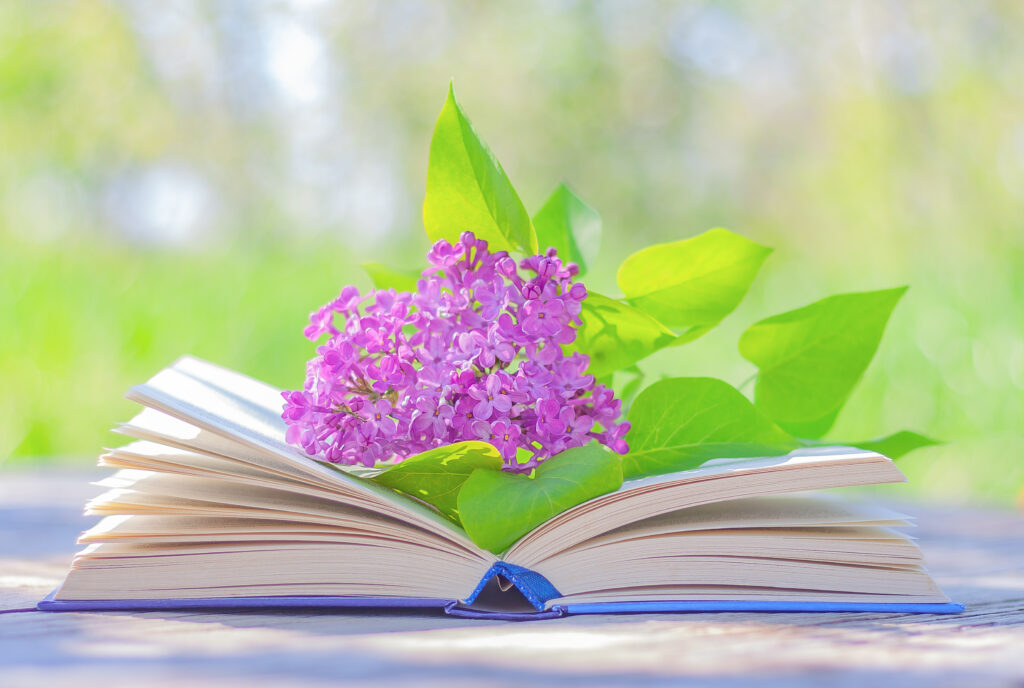
- Why Won’t Fruit Trees Grow On My Trees?
- Tree Pruning Techniques & Best Practices
- An Easy Guide To Fruit Tree Rootstocks
- Top Tips For Fruit Trees: Planting, Caring, & Maintenance
- Bareroot vs Potted Plants: What Is The Difference?
At Jung Seed Co, we strive to be your go-to guide for all your gardening needs. Our YouTube channel Jung Garden Center now includes our new video series All Things Green where our experts provide gardening tips for all levels of gardeners. When you need reliable gardening advice, turn to the trusted experts at Jung.
View our new catalog online or browse our website for all of your gardening favorites. To receive info on new products, exclusive deals, and specials, be sure to sign up for our weekly email. Join our Facebook page, to discuss all things gardening!
About the Author: Matthew Olson is a professional horticulturist and garden writer. He has a bachelor’s degree in horticulture from UW-River Falls and is a certified professional with the Minnesota Nursery and Landscape Association. His enthusiasm for plants and the outdoors brought him to the green industry. He regularly writes articles about gardening for both gardeners and industry professionals. He can be reached at matt@mattolsonhorticulture.com